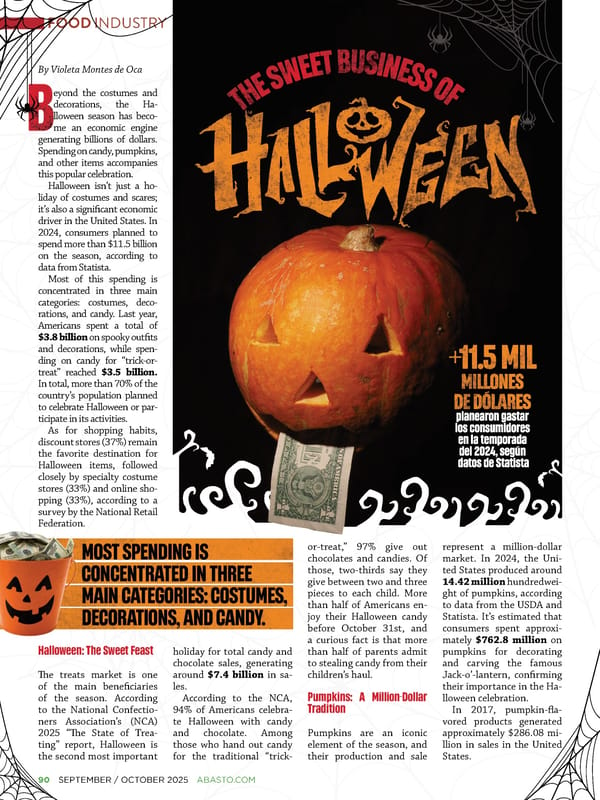By Violeta Montes de Oca eyond the costumes and decorations, the Ha- lloween season has beco- me an economic engine generating billions of dollars. Spending on candy, pumpkins, and other items accompanies this popular celebration. Halloween isn’t just a ho- liday of costumes and scares; it’s also a signifcant economic driver in the United States. In 2024, consumers planned to spend more than $11.5 billion on the season, according to data from Statista. Most of this spending is concentrated in three main categories: costumes, deco- rations, and candy. Last year, Americans spent a total of $3.8 billion on spooky outfts and decorations, while spen- ding on candy for “trick-or- treat” reached $3.5 billion. In total, more than 70% of the country’s population planned to celebrate Halloween or par- ticipate in its activities. As for shopping habits, discount stores (37%) remain the favorite destination for Halloween items, followed closely by specialty costume stores (33%) and online sho- pping (33%), according to a survey by the National Retail Federation. or-treat,” 97% give out chocolates and candies. Of those, two-thirds say they give between two and three pieces to each child. More than half of Americans en- joy their Halloween candy before October 31st, and a curious fact is that more than half of parents admit to stealing candy from their children’s haul. Pumpkins: A Million-Dollar Tradition Pumpkins are an iconic element of the season, and their production and sale represent a million-dollar market. In 2024, the Uni- ted States produced around 14.42 million hundredwei- ght of pumpkins, according to data from the USDA and Statista. It’s estimated that consumers spent approxi- mately $762.8 million on pumpkins for decorating and carving the famous Jack-o’-lantern, confrming their importance in the Ha- lloween celebration. In 2017, pumpkin-fa- vored products generated approximately $286.08 mi- llion in sales in the United States. holiday for total candy and chocolate sales, generating around $7.4 billion in sa- les. According to the NCA, 94% of Americans celebra- te Halloween with candy and chocolate. Among those who hand out candy for the traditional “trick- Halloween: The Sweet Feast Te treats market is one of the main benefciaries of the season. According to the National Confectio- ners Association’s (NCA) 2025 “Te State of Trea- ting” report, Halloween is the second most important MOST SPENDING IS CONCENTRATED IN THREE MAIN CATEGORIES: COSTUMES, DECORATIONS, AND CANDY. 90�SEPTEMBER / OCTOBER 2025�ABASTO.COM FOOD INDUSTRY
 Abasto Magazine: September/October 2025 ENGLISH Page 105 Page 107
Abasto Magazine: September/October 2025 ENGLISH Page 105 Page 107